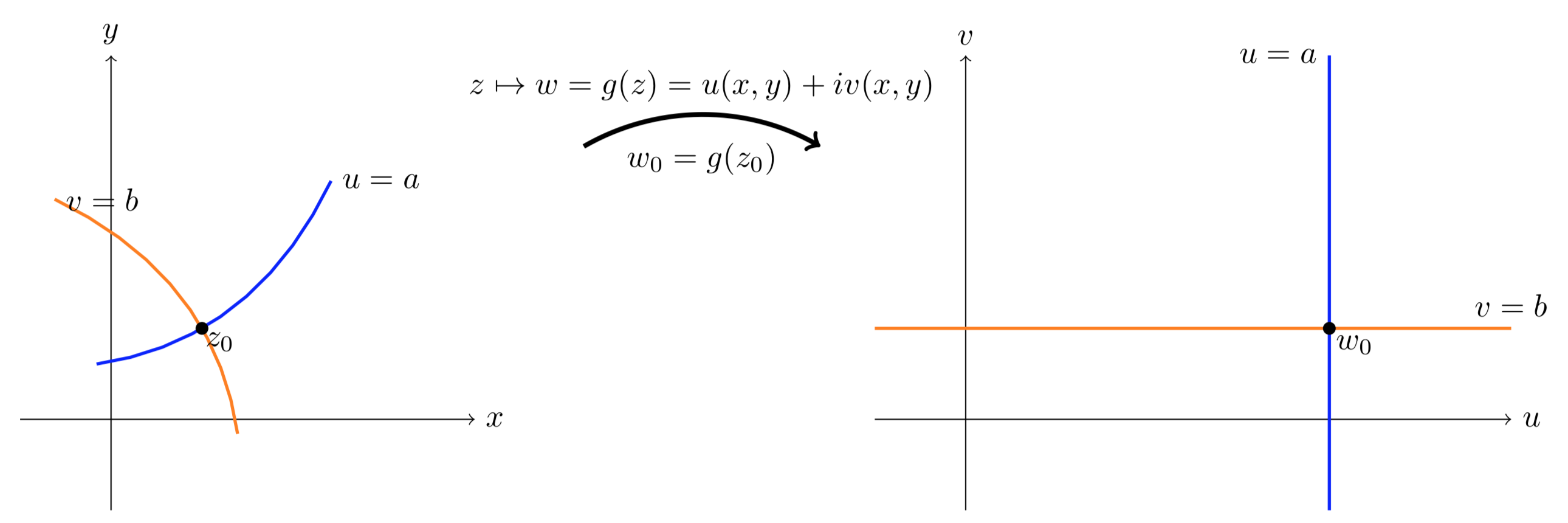11.4: Digresión a funciones armónicas
- Page ID
- 109900
Si\(u\) y\(v\) son conjugados armónicos y\(g = u + iv\) tiene\(g'(z_0) \ne 0\), entonces las curvas de nivel de\(u\) y\(v\) a través\(z_0\) son ortogonales.
Lo probamos en un tema anterior usando las ecuaciones de Cauchy-Riemann. Aquí se hará un argumento que involucra mapas conformes.
- Prueba
-
Primero examinaremos cómo\(g\) mapea la curva de nivel\(u(x, y) = a\). Ya que\(g = u + iv\), la imagen de la curva de nivel es\(w = a + iv\), es decir, es (contenida en) una línea vertical en el\(w\) plano. Asimismo, la curva de nivel\(v(x, y) = b\) se mapea a la línea horizontal\(w = u + ib\).
Así, las imágenes de las dos curvas de nivel son ortogonales. Ya que\(g\) es conforme conserva el ángulo entre las curvas de nivel, por lo que deben ser ortogonales.

\(g = u + iv\)mapea curvas de nivel de\(u\) y\(v\) a líneas de cuadrícula.


